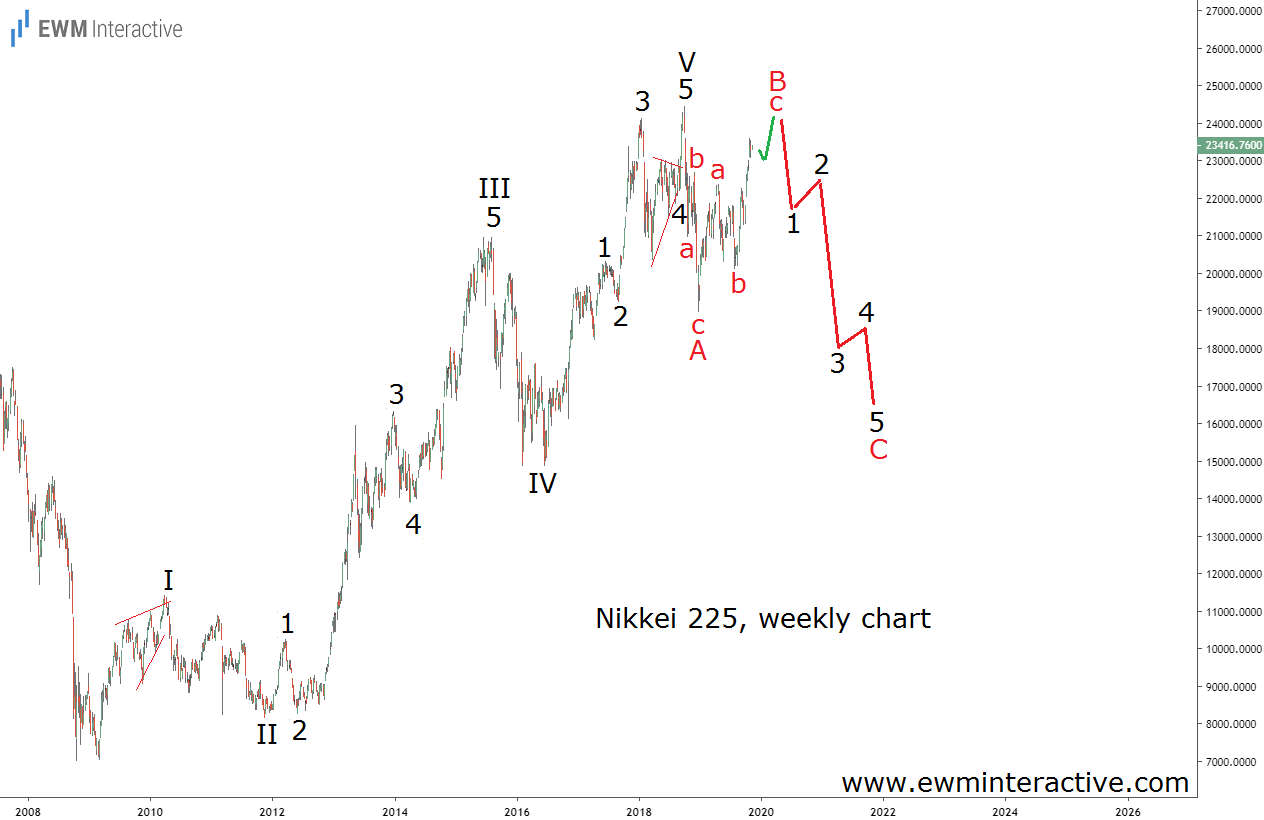The Japanese Nikkei 225 reached a multi-year high of 24 448 in October 2018. The last time the index traded this high was 27 years ago, in 1991, in the aftermath of the Japanese asset bubble. However, the bulls couldn’t maintain their momentum last year, which opened the door for a decline to 18 949 by December 2018.
The Nikkei 225 spent the entire 2019 trying to recover and is now hovering above 23 400. Does this mean it is safe to join the bulls again as the uptrend supposedly continues? Let’s see what is the Elliott Wave principle‘s take on the matter.

The weekly chart above reveals that the 2009-2018 rally had formed a complete five-wave impulse pattern. It is labeled I-II-III-IV-V, where the five sub-waves of wave III and V are also visible, while wave I is a leading diagonal.
Unfolding Correction Makes Nikkei 225 Bulls Vulnerable
The Elliott Wave theory states that a three-wave correction in the opposite direction follows every impulse. And indeed, the decline from 24 448 to 18 949 can be seen as a simple a-b-c zigzag. The problem is that this dip is too small in respect to the gigantic impulse it precedes.
Therefore, we believe it was just the first phase – wave A – of a larger A-B-C flat correction. If this assumption is correct, the current a-b-c recovery to 23 591 so far must be wave B. Once it is over, we can expect another selloff in wave C to approximately 17 000.
Even a new high above 24 448 in wave B is not going to invalidate this count. It will only turn the regular flat correction depicted above into an expanding one. In both cases, a ~30% drop should follow in wave C. We think now is not the time for bravery when it comes to the Nikkei 225. Observing from a safe distance makes more sense.
